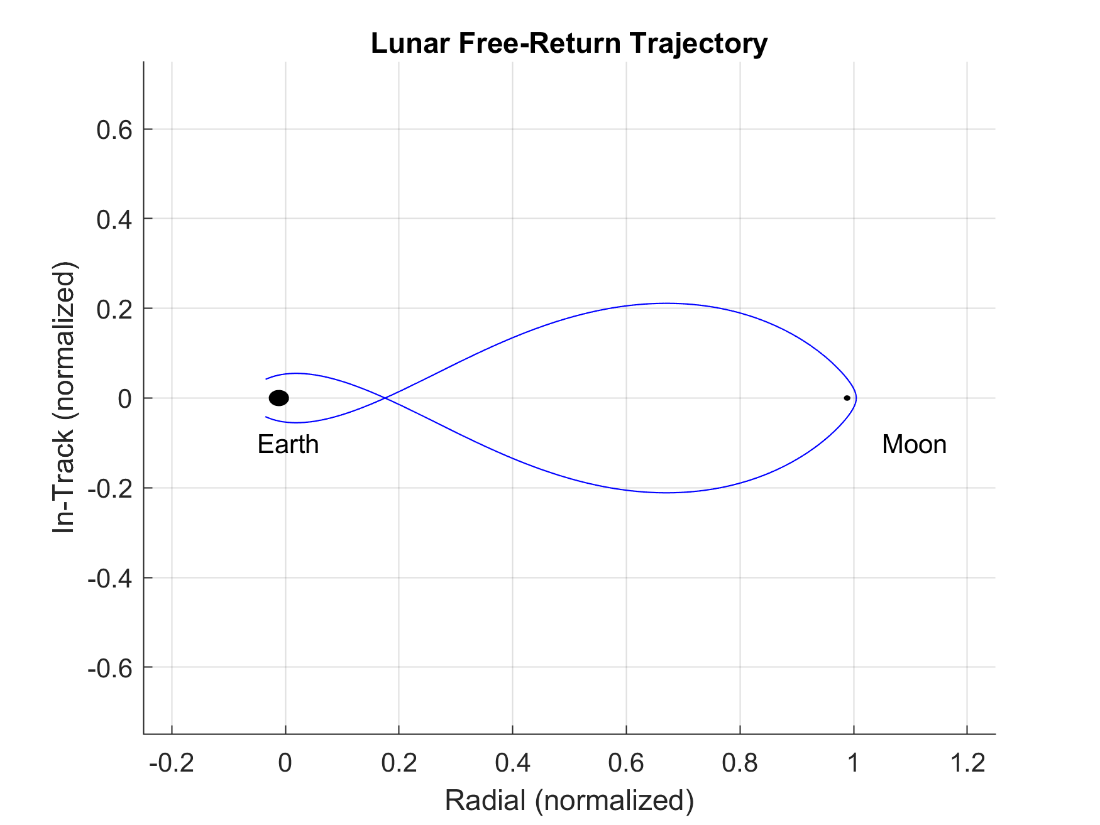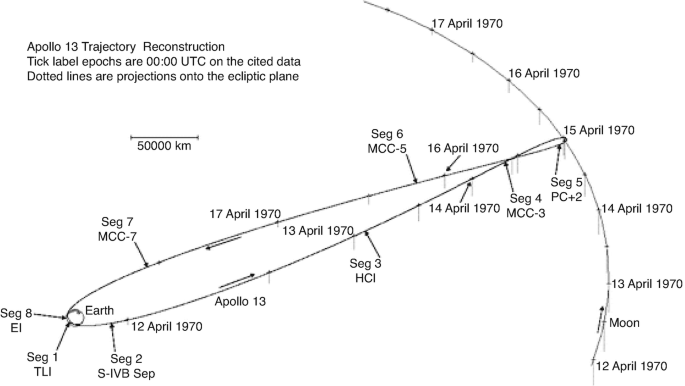Welcome to Spacetime with Brandon!
Cislunar Relative Motion Orbital Mechanics
Circumlunar Trajectories
Travel directly to the Moon can also be achieved without concern of the Lagrange points. In the Apollo era, NASA burned spacecraft directly from low Earth orbit (LEO) onto a trajectory to flyby the Moon at a specific altitude to then burn again to insert into a lunar orbit. The burn to create a trajectory to fly by the Moon is called a translunar injection (TLI) burn. Figure 12-1 shows an example trajectory from a 12,000 km altitude orbit around Earth to a 4,439 km altitude flyby around the Moon.

Figure 12-1: An example of a lunar free-return trajectory in the rotating synodic frame.
From Figure 12-1 above, the TLI burn does not actually occur from the radial axis but instead occurs at an angle, α, extended from the radial axis. This angle begins around 55° degrees and can range up to 90° to create a symmetric lunar flyby, otherwise known as a lunar free-return trajectory. Figure 12-2 shows the trajectory used during the Apollo 13 mission to fly by the Moon. Note that in Figure 12-1, the trajectory is in the relative motion frame where the small loop of the figure eight is near Earth. In Figure 12-2, the trajectory is in the cartesian frame where the small loop of the figure eight is near the Moon. This figure shows time stamps along both the spacecraft and the Moon's trajectory.

Figure 12-2: The lunar free-return trajectory of the Apollo 13 mission.